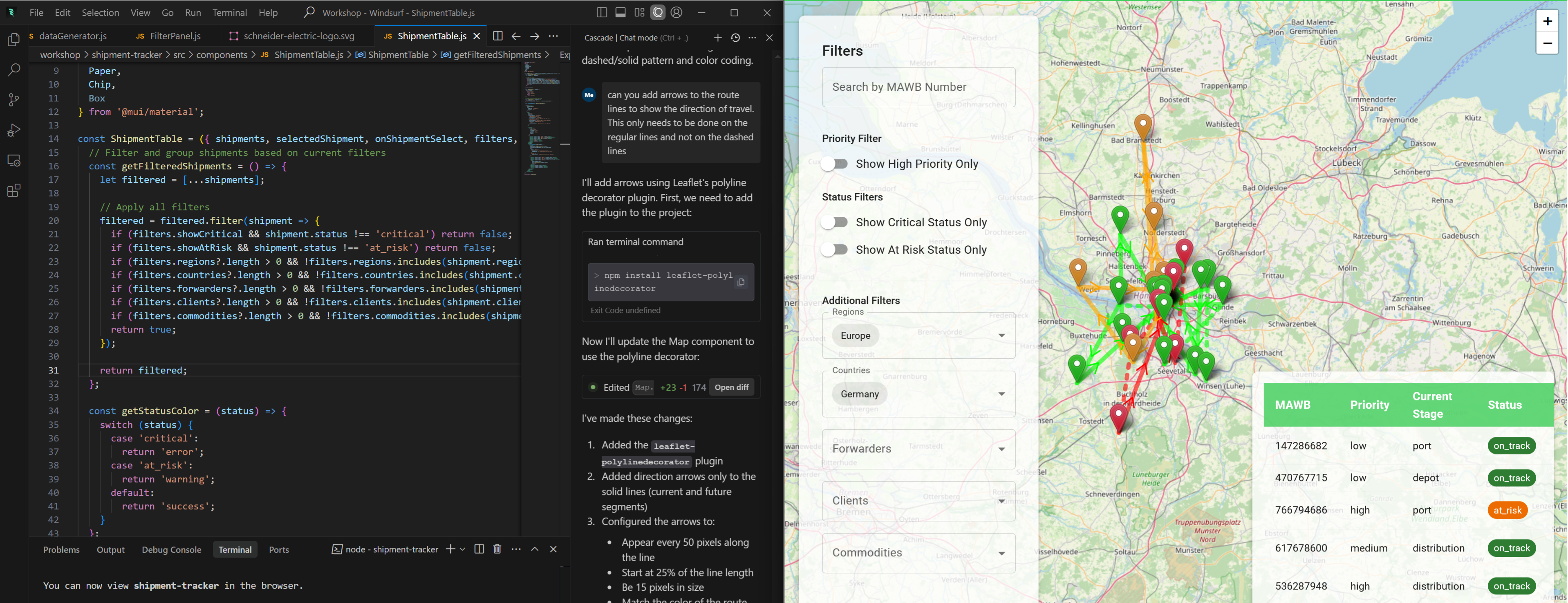by Dominik Bunz and Anna Rasgauski, Software Developers at BusinessCode
At a recent workshop, we had the opportunity to take part in a hands-on day at BusinessCode GmbH. The day was centred around collaboration, innovation and exploring the potential of AI-driven tools to solve a wide range of challenges. Each group worked on a unique task and our group focussed on creating a rapid prototype of a web application using Codeium’s Windsurf Editor.
Our Mission: Rapid Prototyping with Codium’s Windsurf Editor
The goal of our group was to create a working prototype for a potential customer as efficiently as possible. With the Windsurf Editor, we wanted to develop a solution that was tailored to the customer’s needs, while writing as little code as possible ourselves. Here’s how we approached the challenge and what we achieved together:
Our Approach
We started with feeding a PowerPoint presentation to Windsurf’s AI, outlining the customer’s key requirements and expectations:
Shipment Tracking and Supply Chain Visibility: Identifying existing or potential delays in the supply chain.
Quick Forwarder Communication: Enabling immediate communication with local forwarders to resolve issues and determine new delivery dates when needed.
Our objective was then to rely mainly on AI prompts to drive the entire development process. Instead of manual coding, we tasked the Windsurf Editor with generating all the necessary outputs. We focused on crafting structured prompts which clearly communicated the required features and functionality.
The Result: A Working Web Application
By the end of the workshop, we successfully developed a functional web application powered by Node.js and React. Windsurf’s AI generated all of the necessary components, from backend structure to the frontend interface. The application included shipment tracking features and an easy way to quickly get an overview of critical or at-risk shipments.
Key Takeaways
AI Makes Rapid Prototyping Possible: The Windsurf Editor allowed us to deliver a tangible solution within a short time-frame, proving the power of AI in accelerating development. The project was set up quickly and efficiently, even though we had almost no prior experience with Node.js or React.
Clear Communication Is Essential: Starting with a well-defined set of customer requirements gave us the foundation needed to create effective AI prompts. Figuring out how to formulate those requirements for the AI to be successful was part of the challenge.
Collaboration Drives Success: Working as a group allowed us to brainstorm and refine our prompts quickly, enabling the Windsurf Editor to produce a polished output.
Frustration is Part of the Process: While AI tools can streamline development, they’re not perfect. We encountered situations where the AI misunderstood our instructions, invented unnecessary steps, or even broke its own code. It sometimes felt like the AI was losing focus on the bigger picture.
Final Thoughts
Despite some challenges, experience has shown how powerful AI can be as a development partner. By breaking down technical barriers, AI tools enable new opportunities for rapid prototyping and experimentation – even for those unfamiliar with the technologies used.
